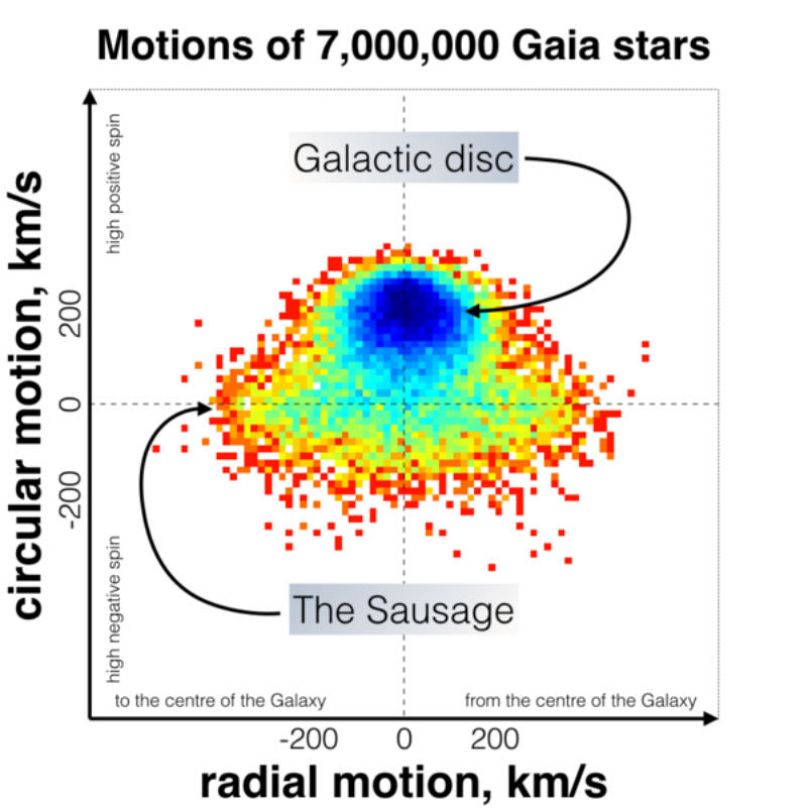A mass of stars dubbed the Sausage Galaxy had a head-on collision with the Milky Way 8 to 10 billion years ago, according to scientists.
It sounds like a very weird kind of cuisine involving a sausage and a Milky Way.
A mass of stars dubbed the Sausage Galaxy had a head-on collision with the Milky Way 8 to 10 billion years ago, according to scientists using data from ESA's Gaia space telescope.
Astronomers have been looking for the source of 'perturbations' in our galaxy that Gaia revealed in its latest data release, and now they think they've found the culprit, which has a distinctive sausage-like shape.
The cosmic crash between the Sausage — a dwarf galaxy — and our own was a defining event in the early history of the Milky Way, and is likely responsible for its inner bulge and outer halo.
Sausage Stars: When looking at the distribution of star velocities in the Milky Way, the stars of the Sausage galaxy form a characteristic sausage-like shape. This unique shape is caused by the strong radial motions of the stars. As the sun lies in the center of this enormous cloud of stars, the distribution does not include the slowed-down stars currently making a U-turn back toward the galaxy’s center.
“The collision ripped the dwarf to shreds, leaving its stars moving in very radial orbits” that are long and narrow like needles, said Vasily Belokurov of the University of Cambridge and the Center for Computational Astrophysics at the Flatiron Institute in New York City. The stars’ paths take them “very close to the centre of our galaxy. This is a telltale sign that the dwarf galaxy came in on a really eccentric orbit and its fate was sealed.”
The discovery was possible because Gaia has tracked the position and velocity of well over a billion stars in our region of the galaxy, representing around 1% of the galactic total but enough to draw significant conclusions about the history of our home area of space.
The paths of the stars from the galactic merger earned them the moniker “the Gaia Sausage”, explained Wyn Evans of Cambridge University. “We plotted the velocities of the stars, and the sausage shape just jumped out at us. As the smaller galaxy broke up, its stars were thrown into very radial orbits. These Sausage stars are what’s left of the last major merger of the Milky Way.”
The Milky Way continues to collide with other galaxies, such as the puny Sagittarius dwarf galaxy. However, the Sausage galaxy was much more massive. Its total mass in gas, stars and dark matter was more than 10 billion times the mass of our Sun. When the Sausage crashed into the young Milky Way, its piercing trajectory caused mayhem. The Milky Way’s disk was probably puffed up or even fractured following the impact, and would have needed to regrow while Sausage debris was scattered all around the inner parts of the Milky Way, creating the ‘bulge’ at the galaxy’s centre and the surrounding ‘stellar halo.’












